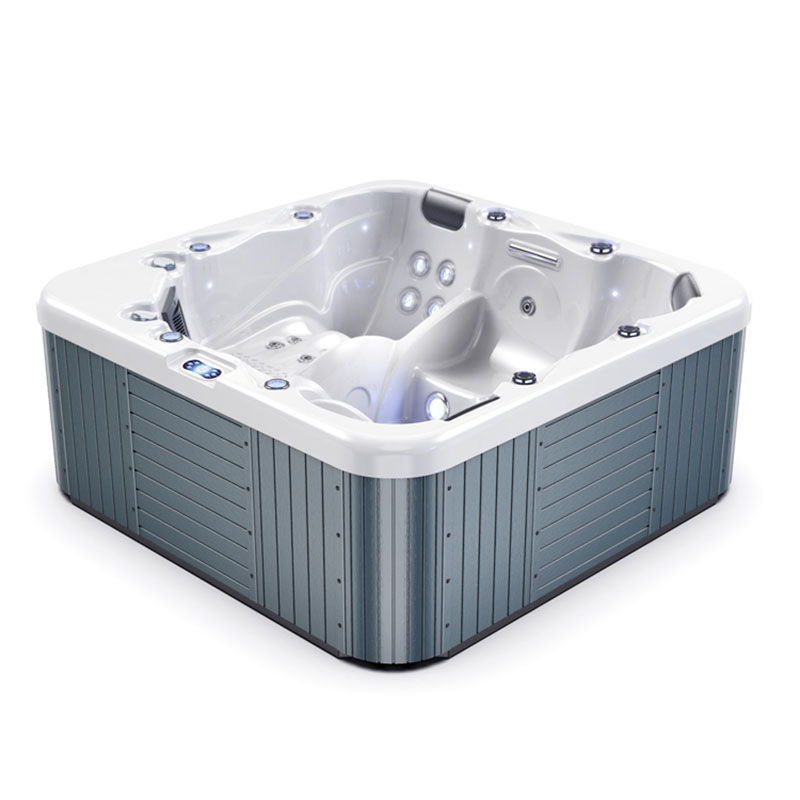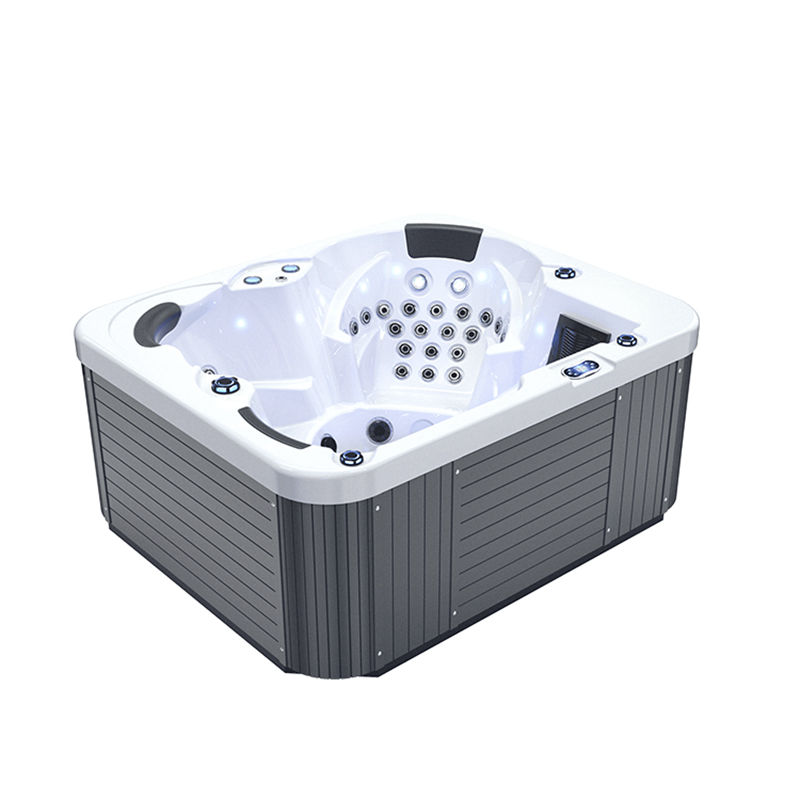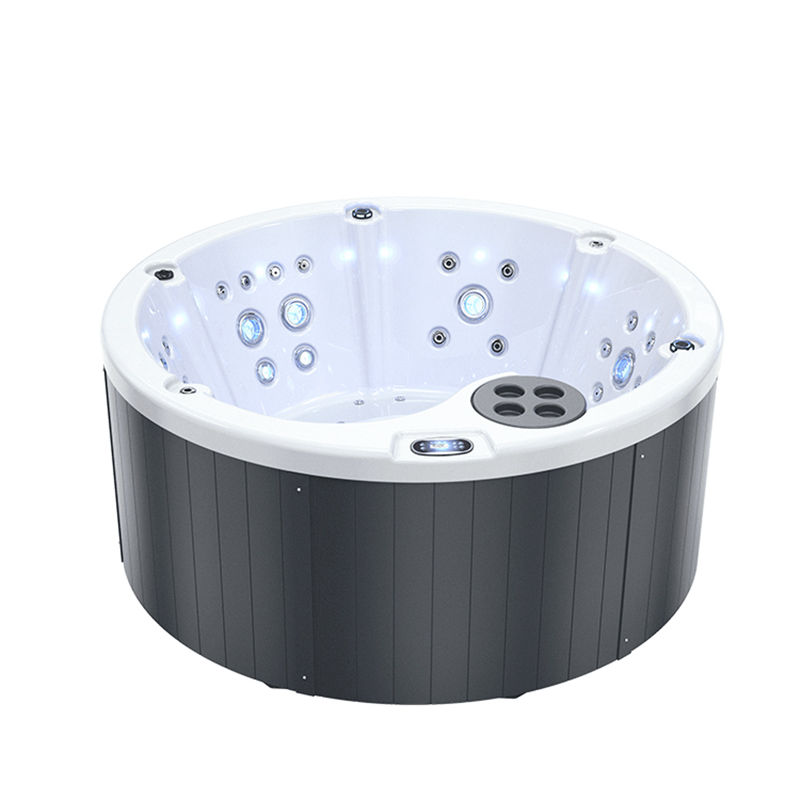As a device that combines hydrotherapy and swimming functions, the swim spa tub has gradually become popular in home fitness, leisure and entertainment, and rehabilitation in recent years. The unique design of the swim spa allows people to enjoy the experience of swimming against the water flow in a relatively small space. However, many potential users often have questions when considering using a swim spa tub: Is it difficult to swim in a swim spa tub? How long should I swim at a time?
This article will analyze the swimming experience of the swim spa tub from multiple aspects, help you understand the characteristics of swimming in this device, and provide reasonable usage suggestions.
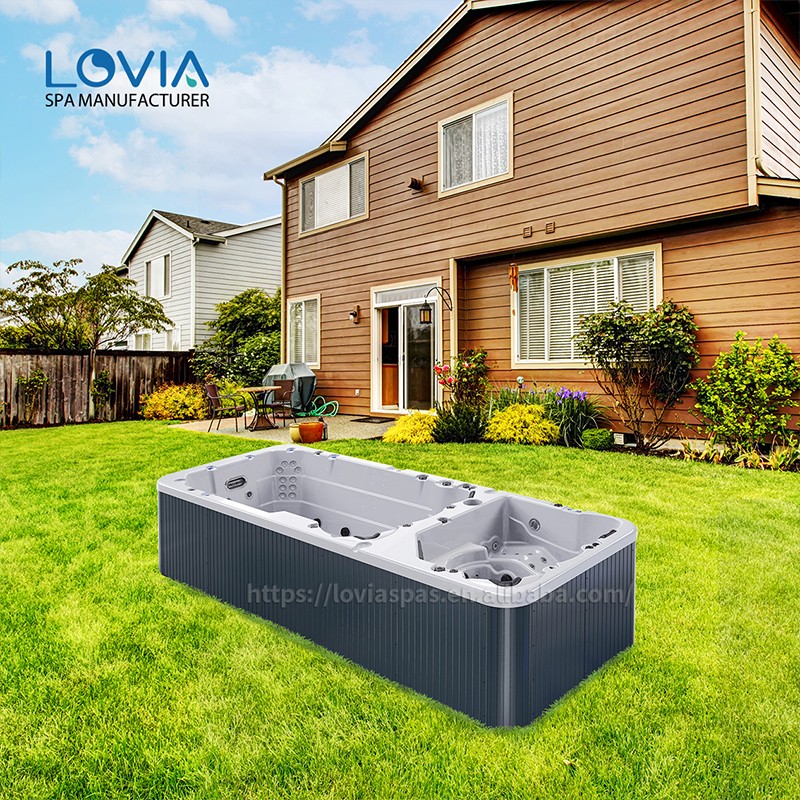
What is a swim spa tub?
Before discussing the difficulty of swimming in a swim spa tub, let's first understand the basic concept of a swim spa tub. A swim spa tub is a device that combines the functions of a swimming pool and a hydrotherapy pool. The appearance of a swim spa is usually smaller than that of a traditional swimming pool, but by adjusting the speed and direction of the water flow, continuous antagonistic swimming can be achieved in a hydrotherapy pool.
Unlike traditional swimming pools, swim spa tubs use built-in water flow systems to create continuous and adjustable water flow, allowing users to swim under the resistance of the water flow without having to swim back and forth in the pool. This "swimming in place" method not only saves space, but also provides a full-body, aerobic and strength training environment.
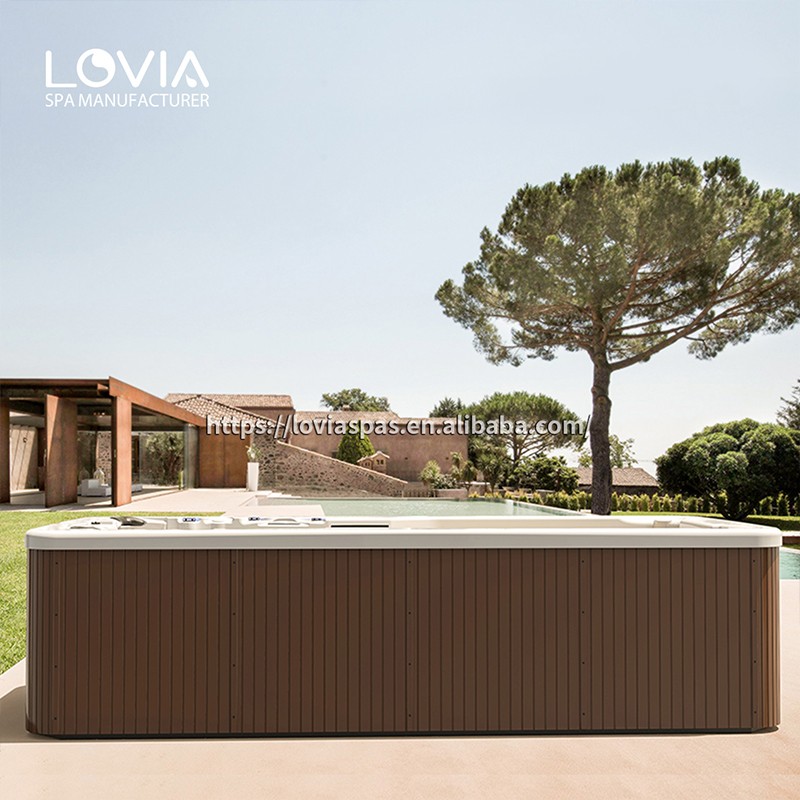
Is it difficult to swim in a swim spa tub?
For many first-time users of swim spa tubs, they may feel that the experience of swimming in this equipment is different from that of traditional swimming pools. So, is it difficult to swim in a swim spa tub? The answer depends on many factors, including personal swimming ability, equipment settings, and water flow intensity. The following are several key factors that affect the swimming experience in a swim spa tub:
Water flow intensity adjustment
The core feature of a swim spa tub is its adjustable water flow system. Water flow intensity is an important factor in determining the difficulty of swimming. Most swim spa tubs allow users to adjust the speed of the water flow according to their physical fitness level and swimming experience, thereby providing a swimming environment that suits their personal needs.
● For beginners or those with weaker swimming abilities, the swim spa current intensity can be set at a low level, which can reduce resistance and help them adapt to the feeling of swimming in the water. At low currents, swimming is much easier, and swim spa users can focus on the fluidity of their movements and the coordination of their breathing without having to worry about fighting against too much water resistance.
● For those with some swimming experience, a medium current intensity can be selected to exercise at an appropriate resistance. This current intensity is usually similar to a gentle swimming pool environment, which can make people feel challenged but not too strenuous.
● For advanced swimmers, the high-intensity current setting of the swim spa tub can provide a greater challenge, simulating an intense open water swimming experience. In this case, swimmers need more strength and endurance to fight against the current, thereby improving their physical fitness and swimming skills.
In general, the swim spa tub can meet the different needs of beginners to professional swimmers through the adjustability of the current intensity. Therefore, whether it is difficult depends on the current intensity selected by the individual and their own physical fitness level.
Adaptability of swimming technique
Although the swim spa tub provides a swimming experience against the current, it is different from free swimming in a traditional swimming pool after all. Therefore, users may need a certain adaptation period at the beginning. Since swimming in a swim spa tub is performed in a relatively fixed position, the body's perception and sense of balance may be different from regular swimming.
● Sense of positioning:
In a swim spa tub, swimmers do not move forward to the edge of the pool as in a traditional swimming pool. Instead, they need to stay in a relatively fixed position, which may be a little uncomfortable for swim spa beginners. With the increase in the number of uses, most people will gradually get used to the sense of position of swimming in a fixed current and can better control the balance of the body.
● Coordination of movement:
The water flow in the swim spa tub will continuously apply resistance to the body, so users need to ensure the coordination and rhythm of the swimming movement. Swim spa beginners may find it challenging to maintain the correct stroke, kick and breathing rhythm while resisting the water flow, but this is a normal reaction in swimming. With repeated practice, the swimming style will become more and more smooth.
● Breathing technique:
In a swim spa tub, the stability of the water flow helps swimmers practice more precise breathing techniques. Unlike breathing adjustments when turning or pausing in a swimming pool, swim spas require users to better control the rhythm of each breath when swimming in a hydrotherapy pool. This is a good opportunity for swimmers to strengthen their breathing skills.
Space limitations
Swim spa tubs have smaller spaces, and swimmers cannot move or turn freely in the pool as they usually do compared to traditional swimming pools. This space limitation does not necessarily increase the difficulty of swimming, but requires users to adapt to the water flow to exercise effectively. Space limitations may make some people who are accustomed to long-distance swimming feel uncomfortable, but for those who want to focus on specific techniques and improve their swimming posture, swim spa tubs are an ideal training tool.
Equipment quality and design
The quality and design of swim spa tub equipment are also an important factor affecting the swimming experience. Some high-end swim spa tub equipment is equipped with a precisely controlled water flow system that can provide a stable and even water flow experience. Lower-quality equipment may produce irregular or unstable water flow, which can make swimming more difficult. Therefore, choosing a high-quality swim spa tub equipment is key to ensuring a good swimming experience.
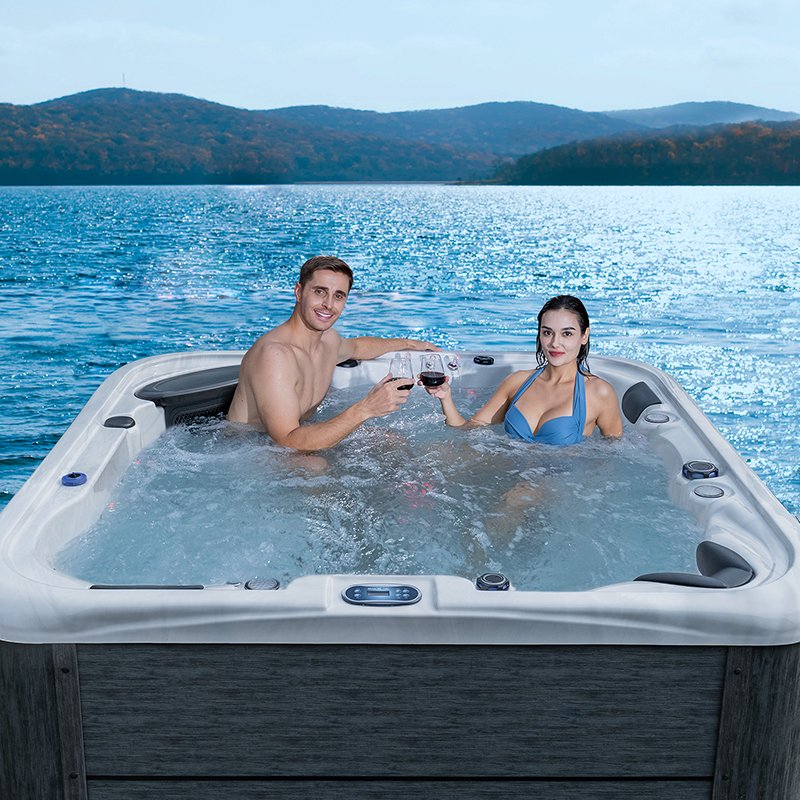
How long is it recommended to swim in a swim spa?
The length of time you spend swimming in a swim spa tub depends on your fitness level, goals, and purpose. As with any exercise, properly controlling the duration of your exercise can not only improve your results, but also avoid fatigue and injury from overtraining. The following are recommended swimming durations based on different fitness levels.
Beginners: 10-20 minutes
For beginners who are using a swim spa tub for the first time, it is recommended to start with short swim sessions. A 10-20 minute low-intensity swim session can help users adapt to the equipment and water environment while avoiding excessive fatigue. Beginners in a swim spa should focus on getting familiar with the feeling of the water flow and practicing basic swimming techniques and breathing rhythm. After gradually adapting, you can slowly increase the swimming time.
Intermediate level: 20-40 minutes
For intermediate users with some swimming experience, the swim spa can be extended to 20 to 40 minutes per session. This duration is enough for a complete aerobic workout, which can significantly improve cardiopulmonary function and endurance. Intermediate users can choose to moderate the water flow intensity and increase the intensity of the exercise while maintaining a moderate rhythm and breathing control. In this way, calories can be burned effectively and physical fitness can be enhanced.
Advanced swimmers: 40-60 minutes or more
Advanced swimmers can perform long, high-intensity swimming training in a swim spa tub. Swimming for 40 to 60 minutes or even longer can provide a comprehensive exercise effect. Such users can usually choose a high-intensity water flow setting to challenge their strength and endurance by increasing resistance. Advanced swimmers can also focus on fine swimming skills and improve speed and efficiency during long swimming sessions.
It should be noted that although long-term use of the swim spa can improve exercise results, it also needs to be adjusted according to personal physical conditions to avoid excessive exercise causing physical discomfort or fatigue. Timely rest is the key to maintaining a good exercise effect.
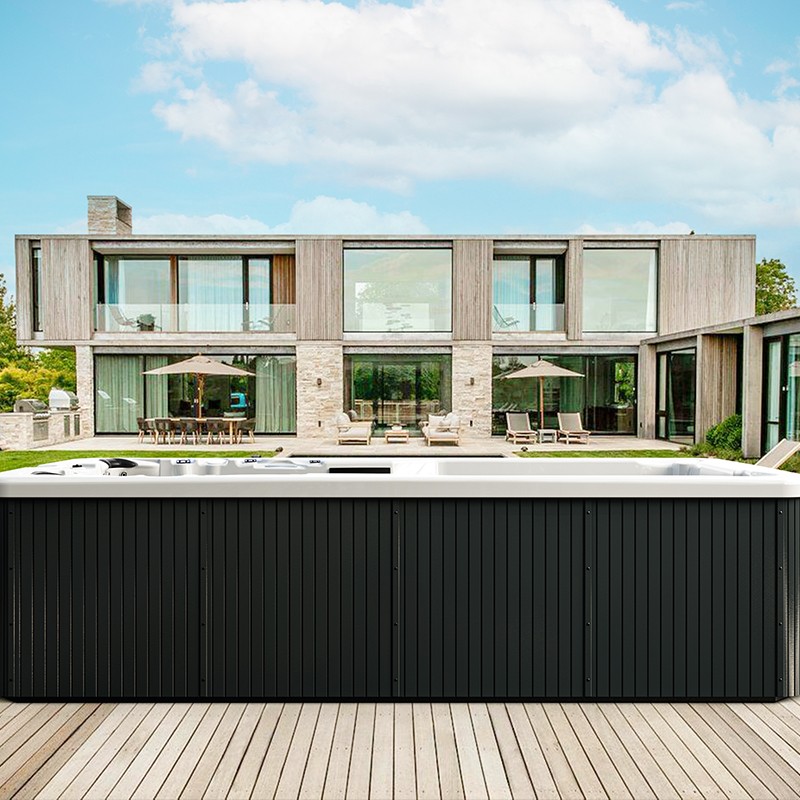
Suggestions on swimming methods in swim spa tubs
Swim spa tubs can provide users with a variety of swimming methods. According to personal physical fitness and training goals, choosing different swimming postures and exercise methods can increase the diversity and fun of swimming.
Freestyle (crawl)
Freestyle is an efficient aerobic exercise that is suitable for swim spa tubs. Because the spa provides a steady water flow, users can focus on improving the coordination of strokes and leg movements. The full-body exercise of freestyle swimming can effectively improve cardiovascular function and burn a lot of calories.
Breaststroke
The breaststroke is also a good choice in the swim spa tub, especially for beginners and intermediate swimmers. The breaststroke is relatively slow, but it requires high demands on the leg and core muscles, which helps to enhance muscle endurance.
How does Lovia Spa ensure product quality?
Lovia Spa maintains a rigorous quality control process throughout manufacturing, assembly, and final testing. Our products undergo multiple inspections to ensure they meet international certifications such as CE, ETL, SAA, ROHS, REACH, and ISO9001. With a team of over 20 industry experts overseeing production, we guarantee flawless craftsmanship in every unit. Whether you're ordering a single spa or bulk shipments, we provide high-quality solutions at factory-direct prices.


